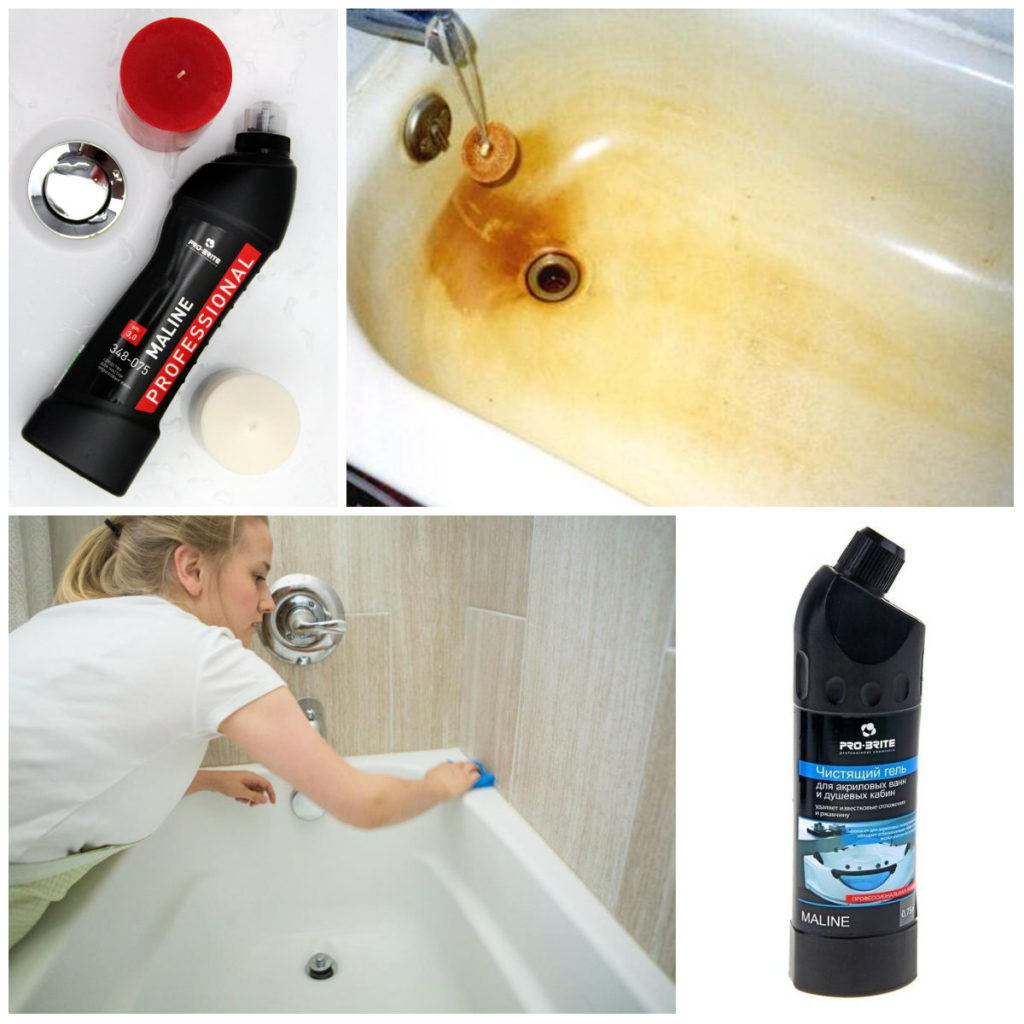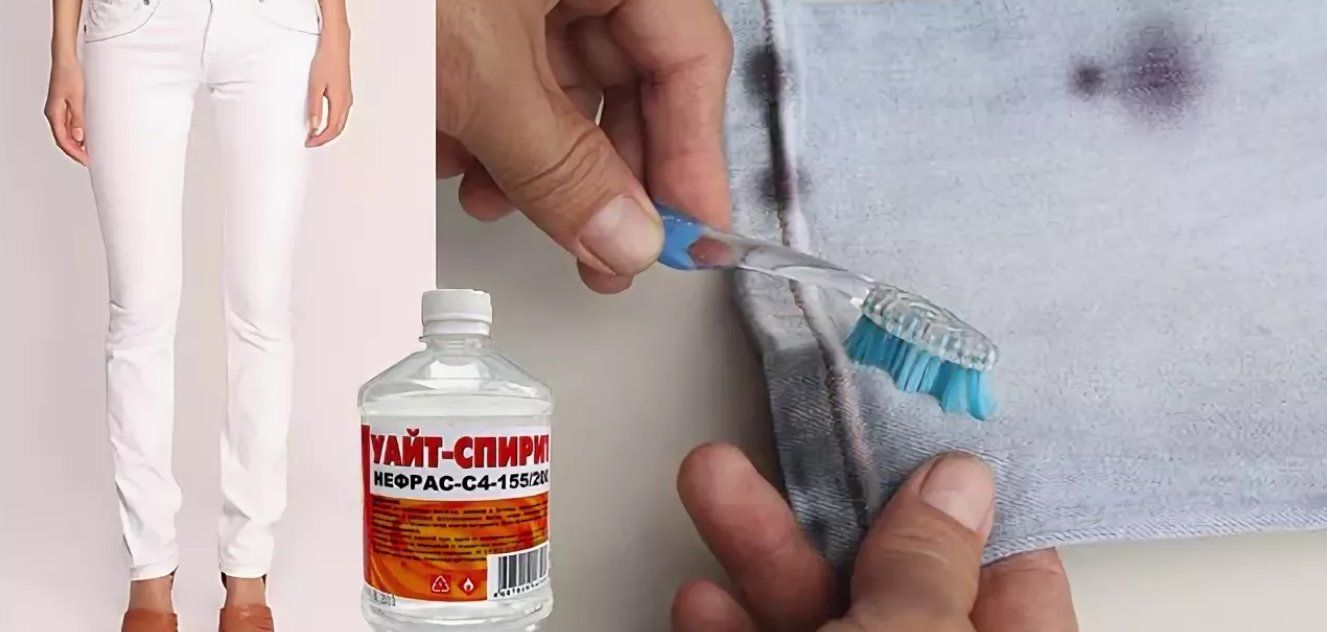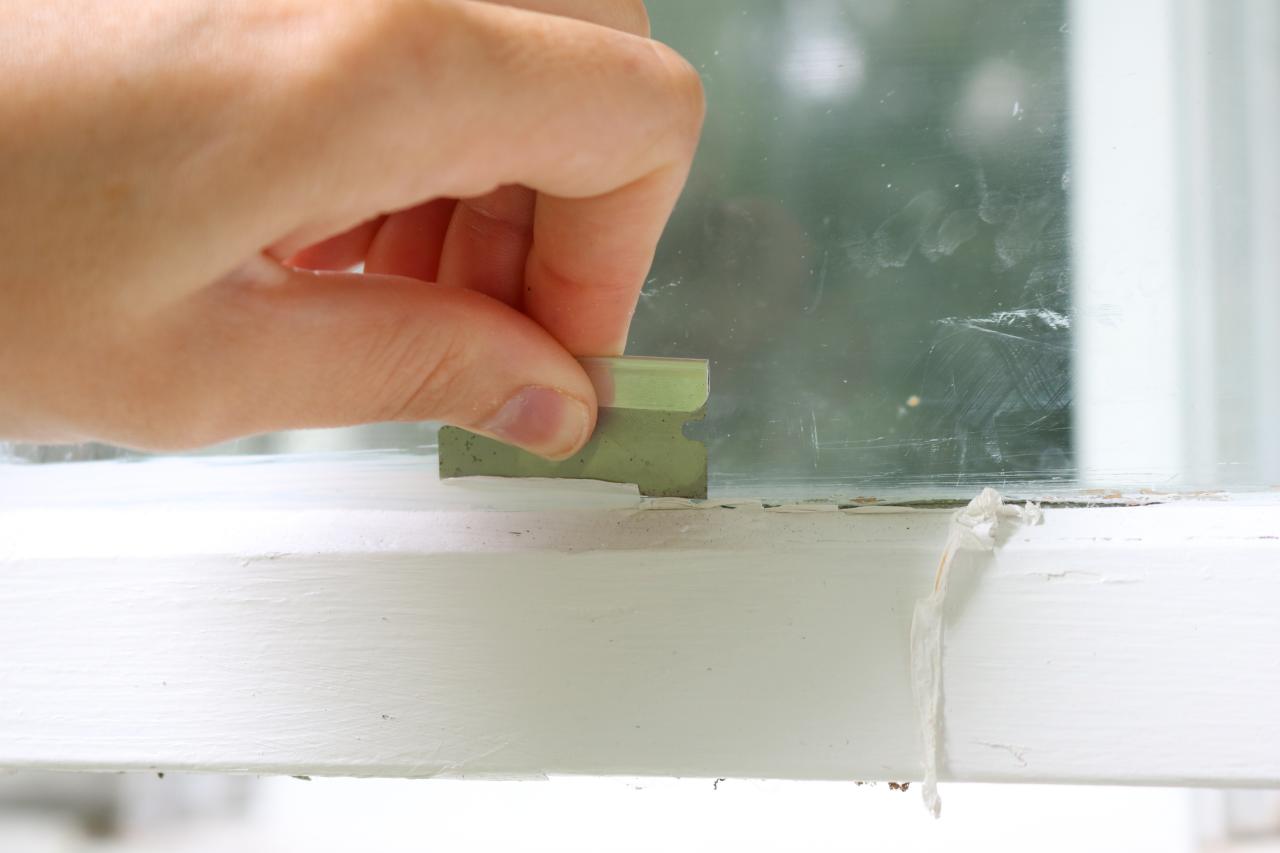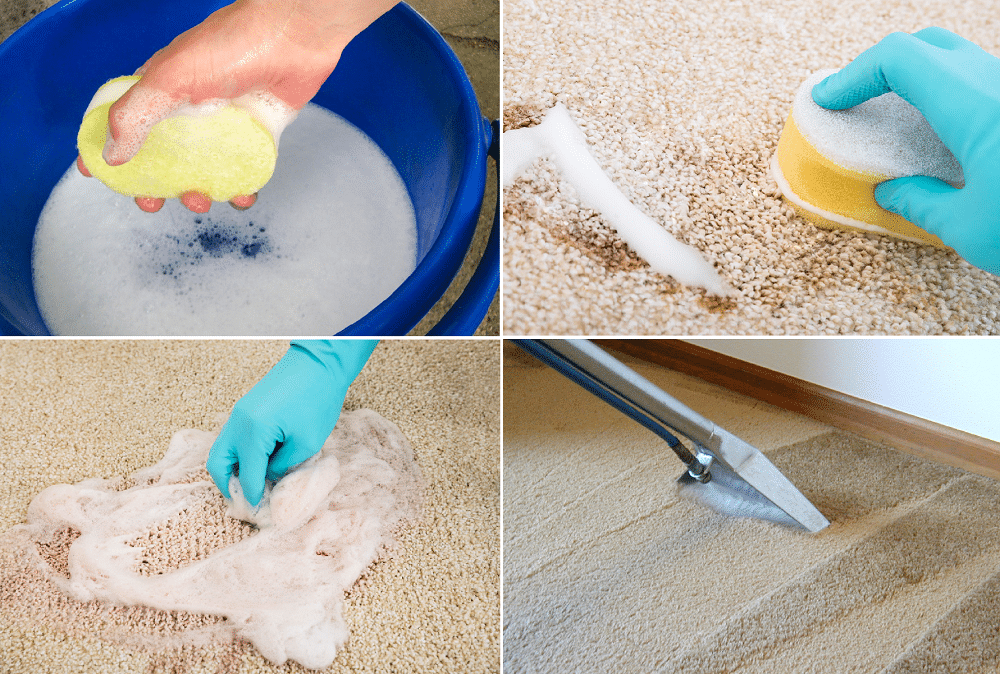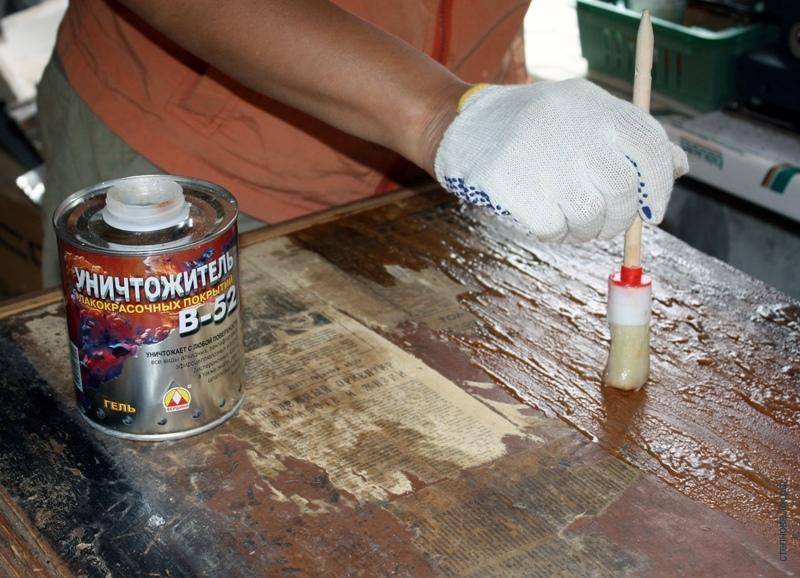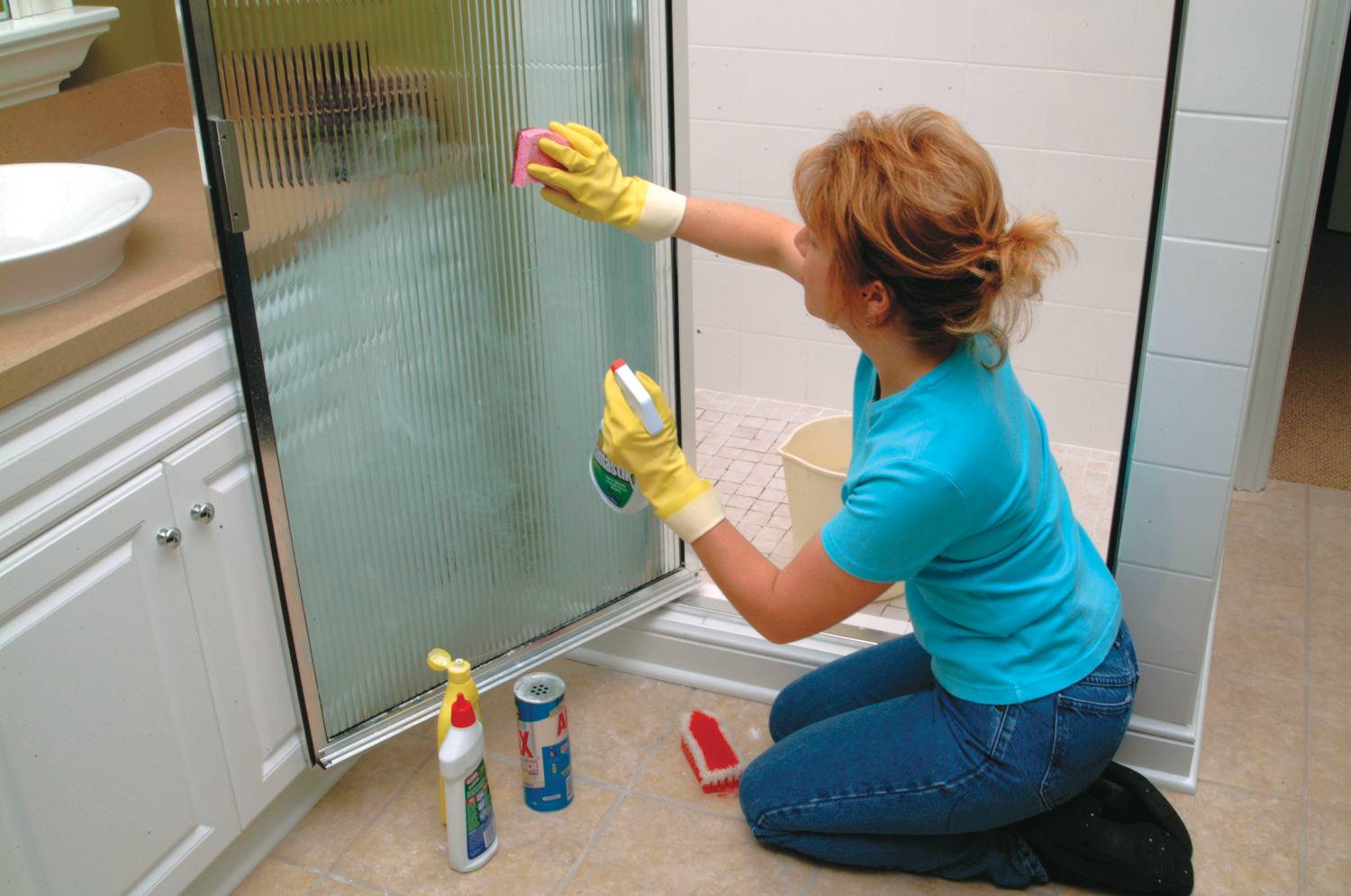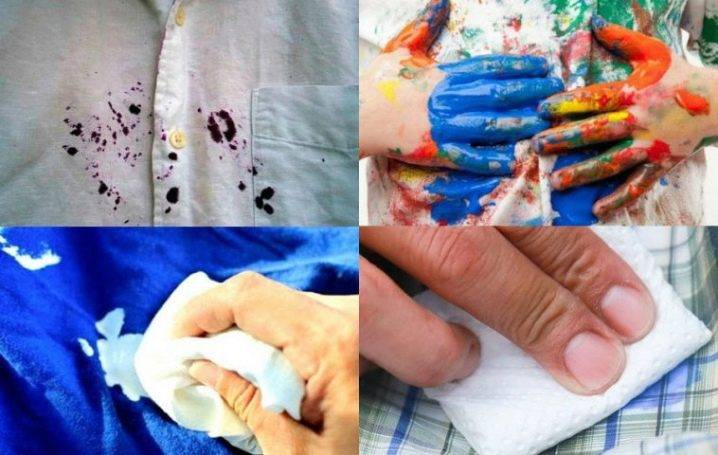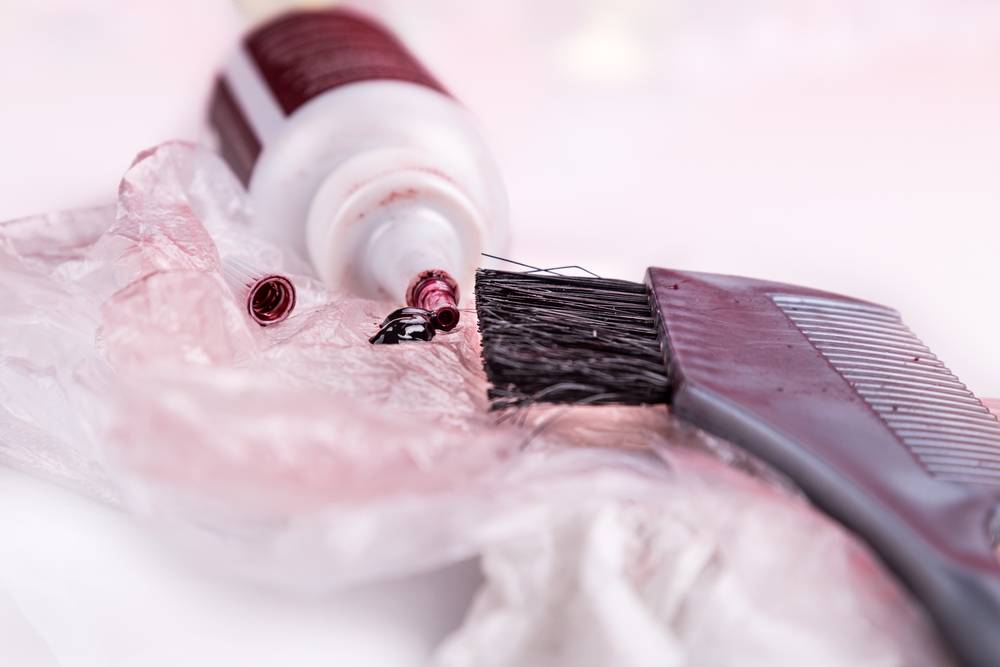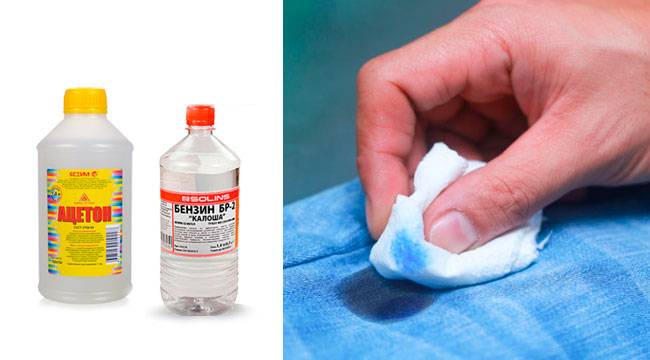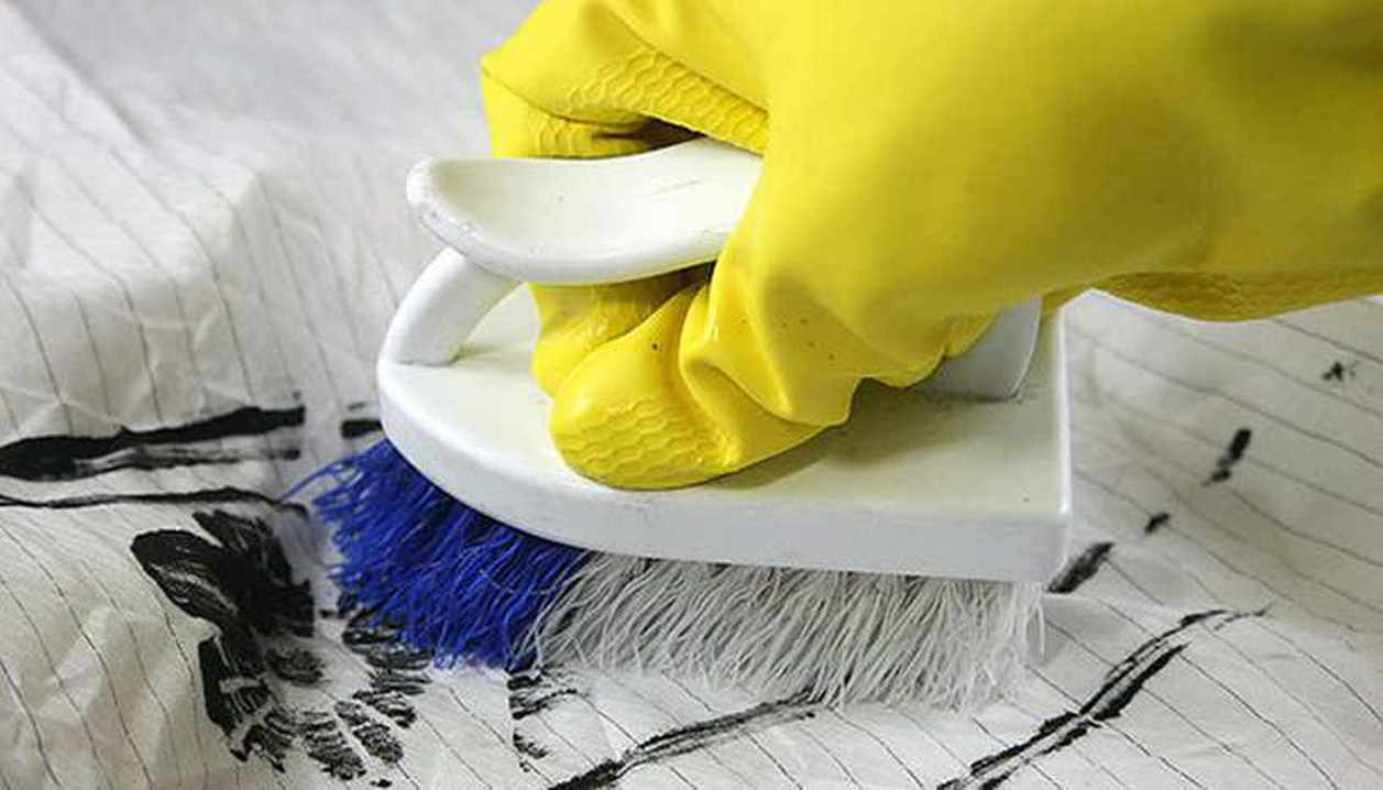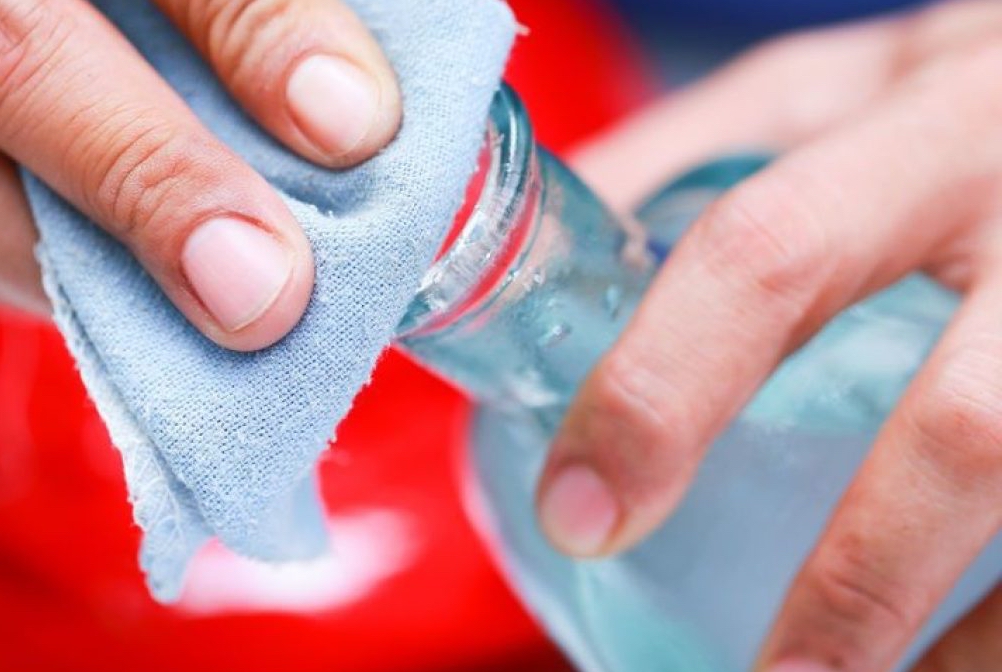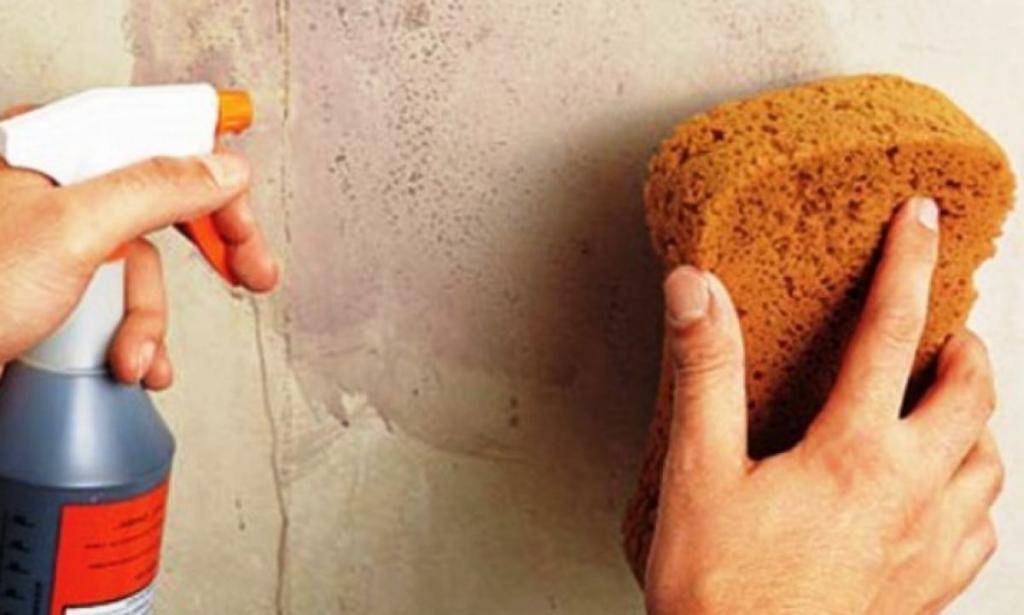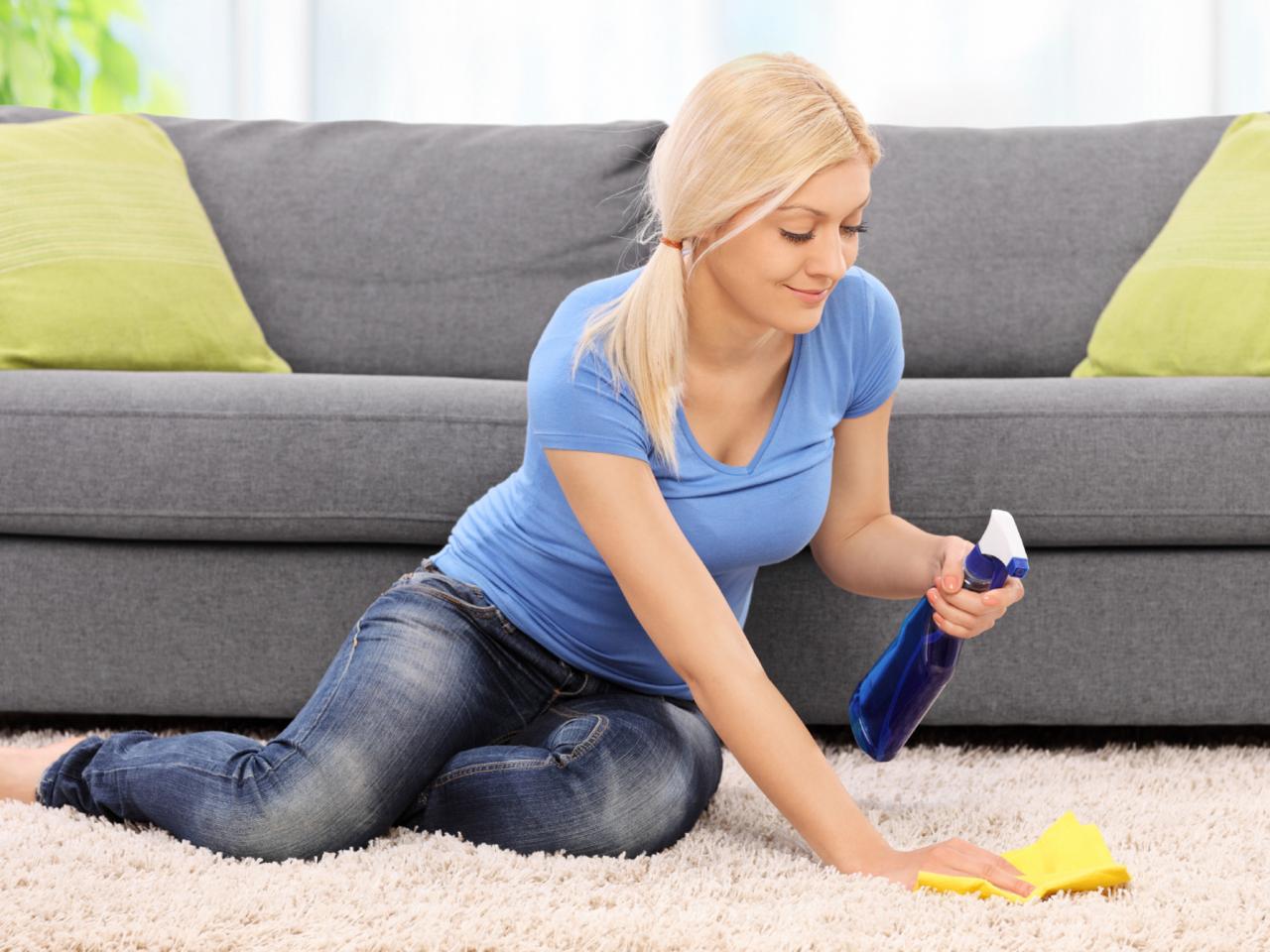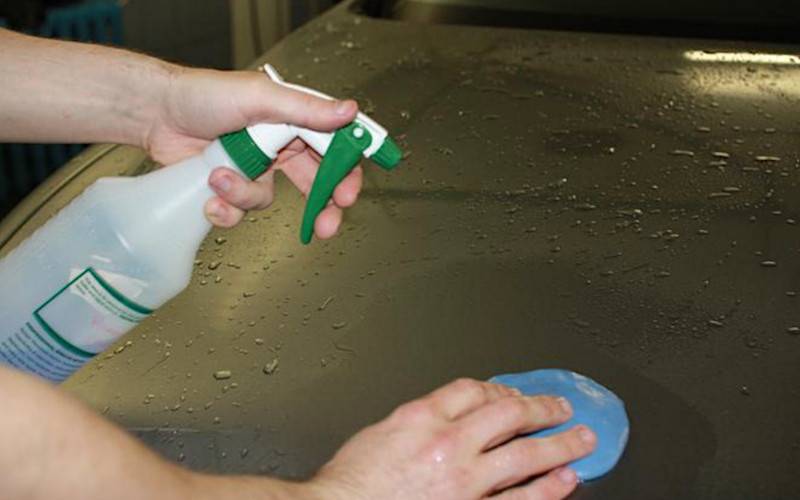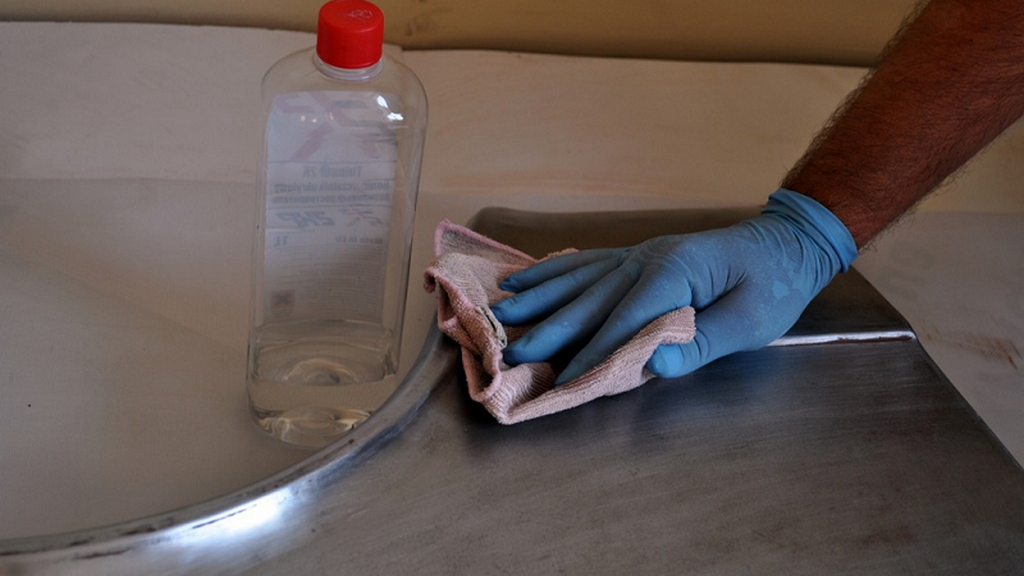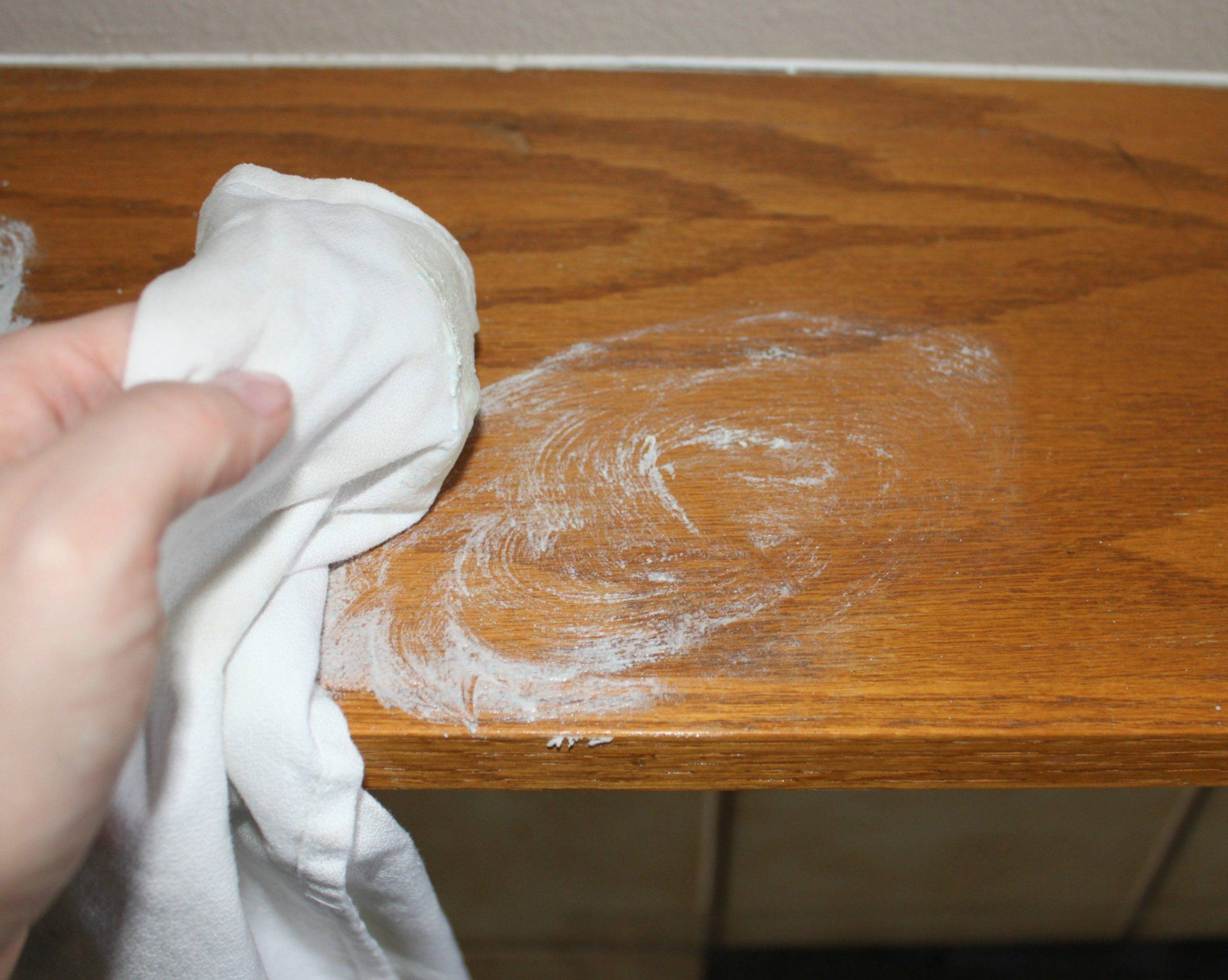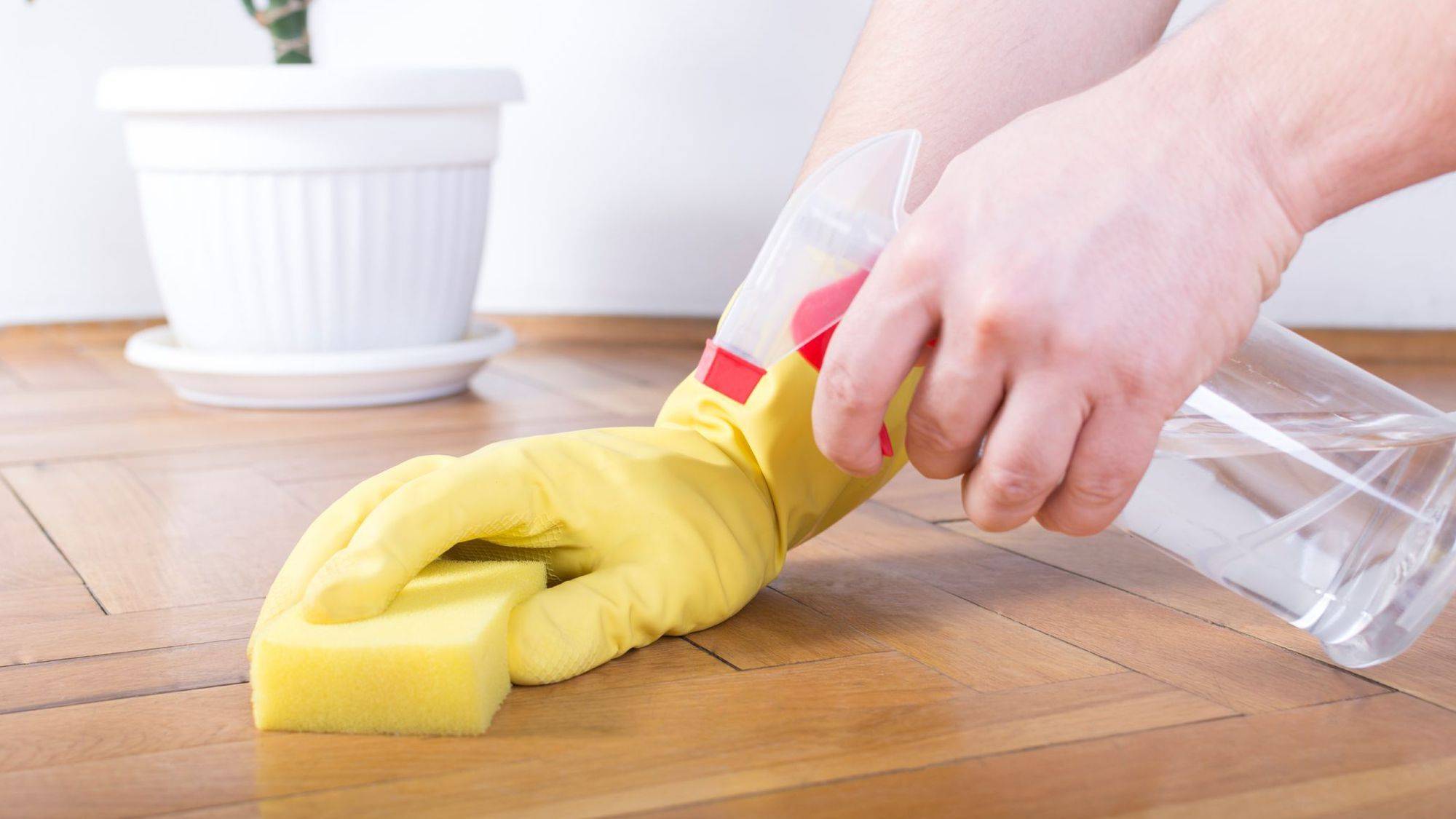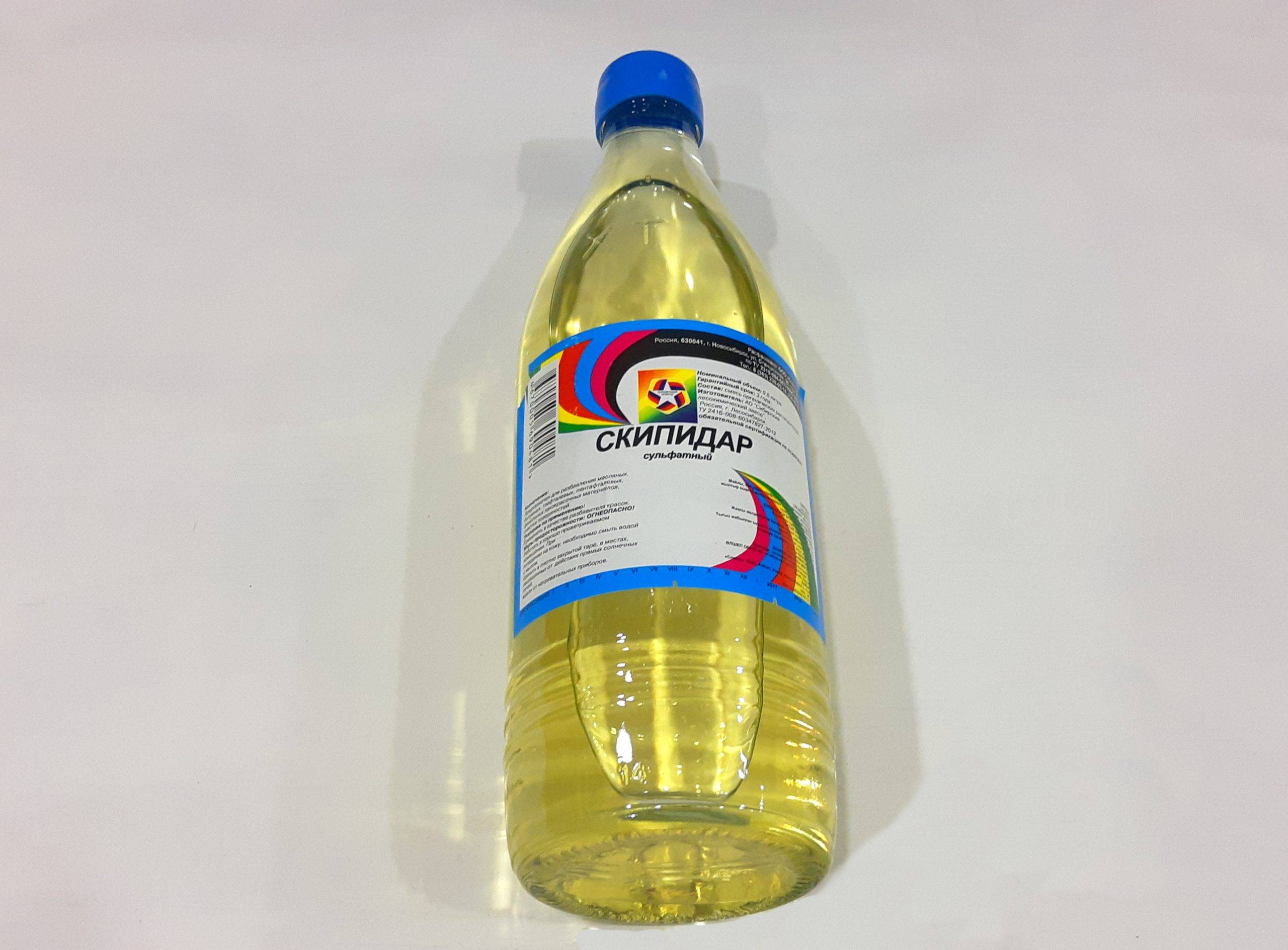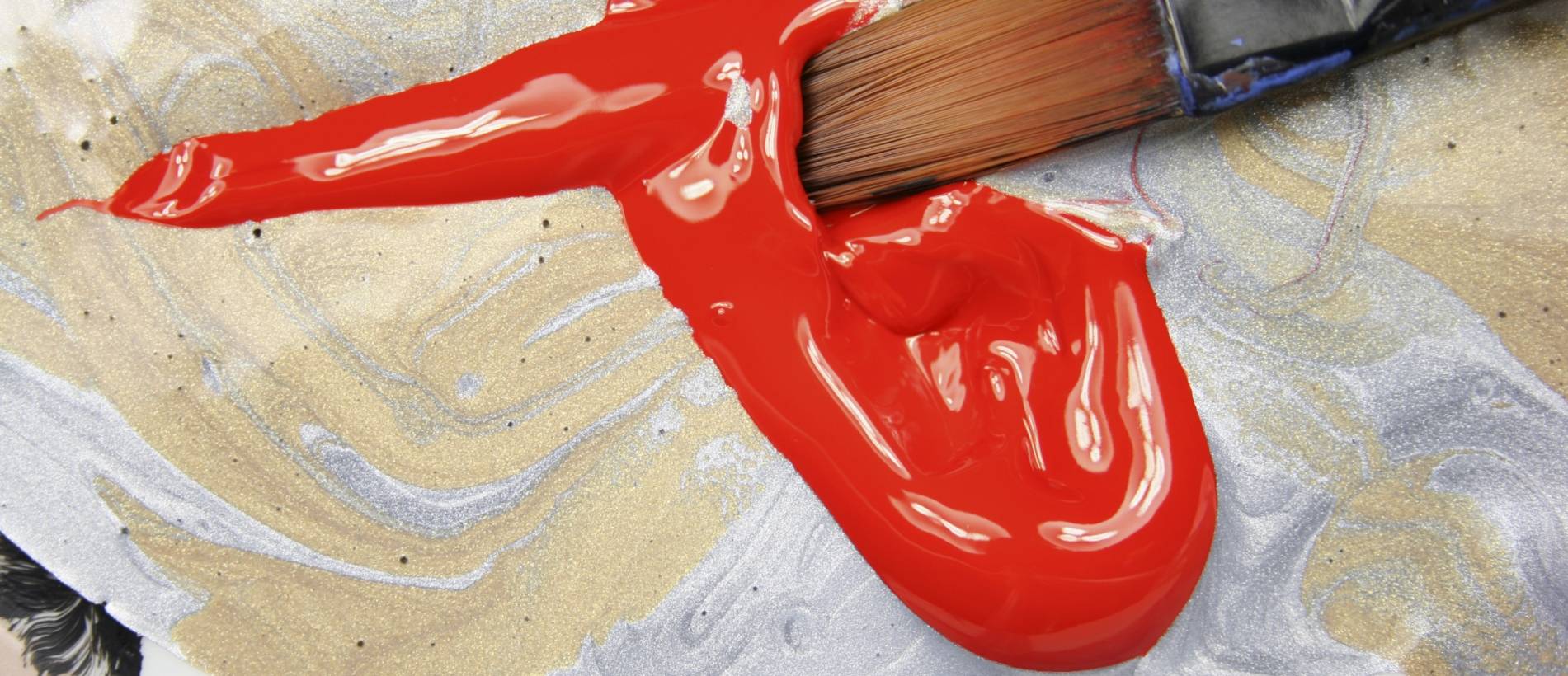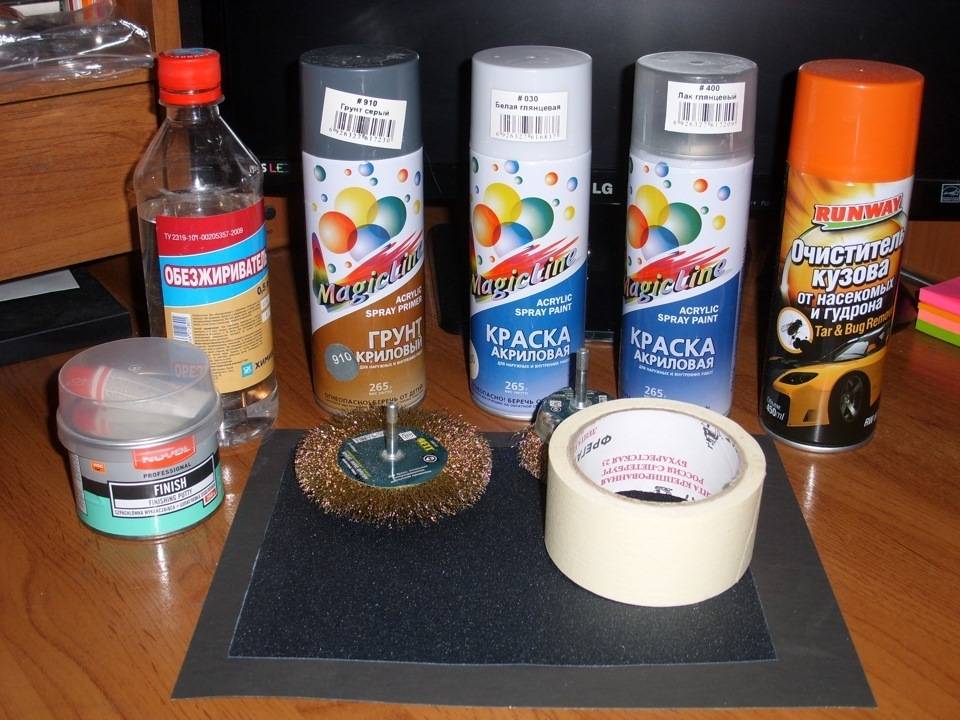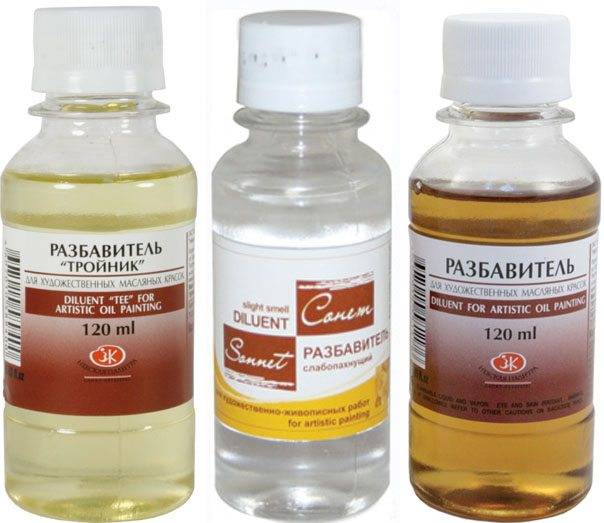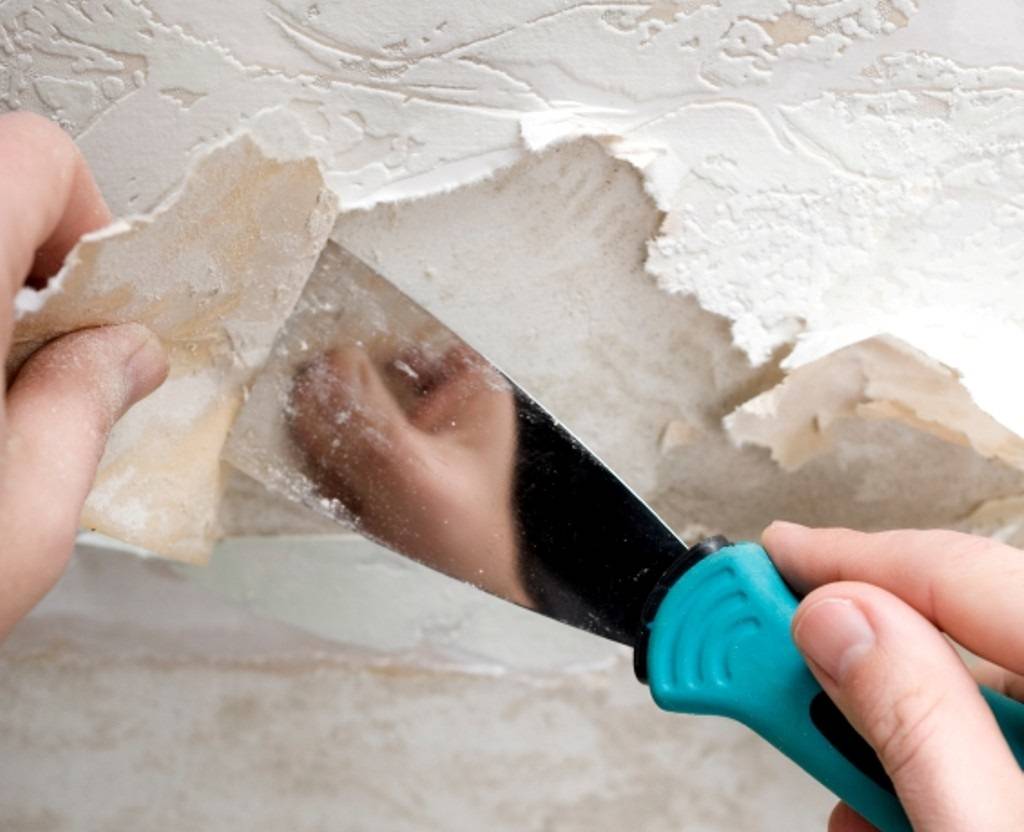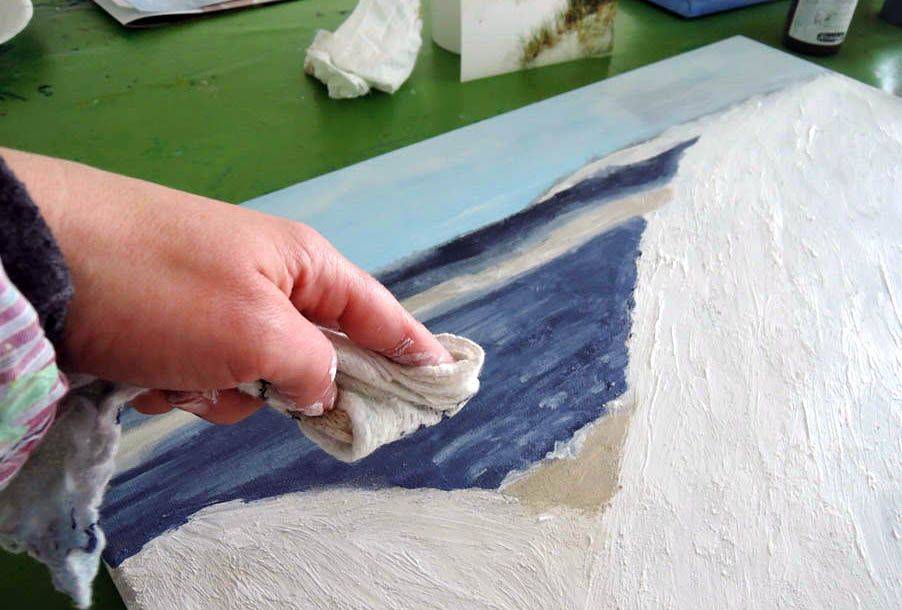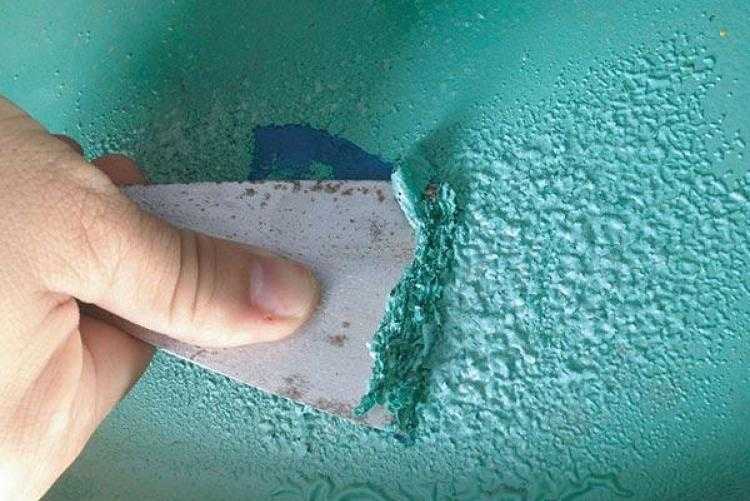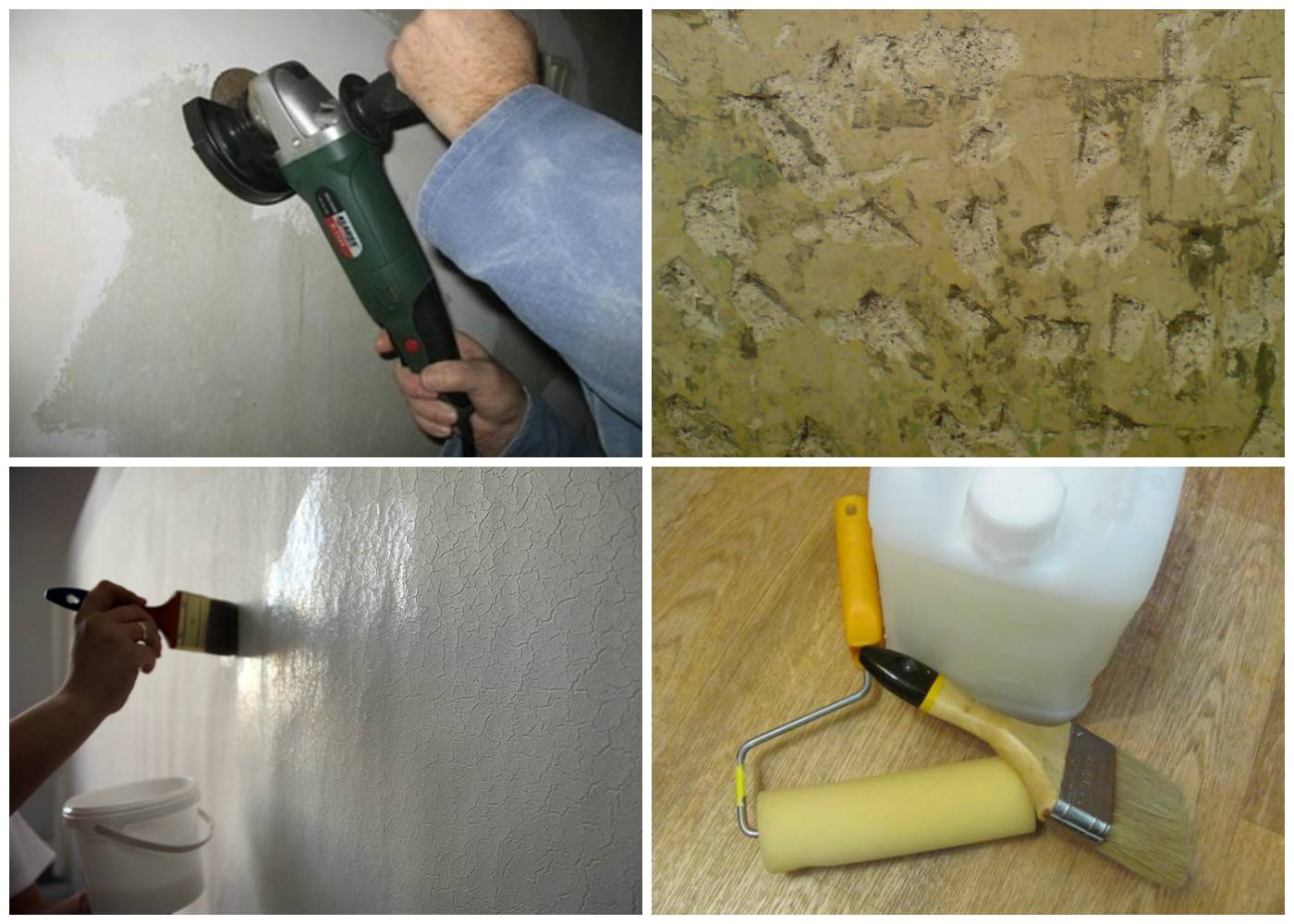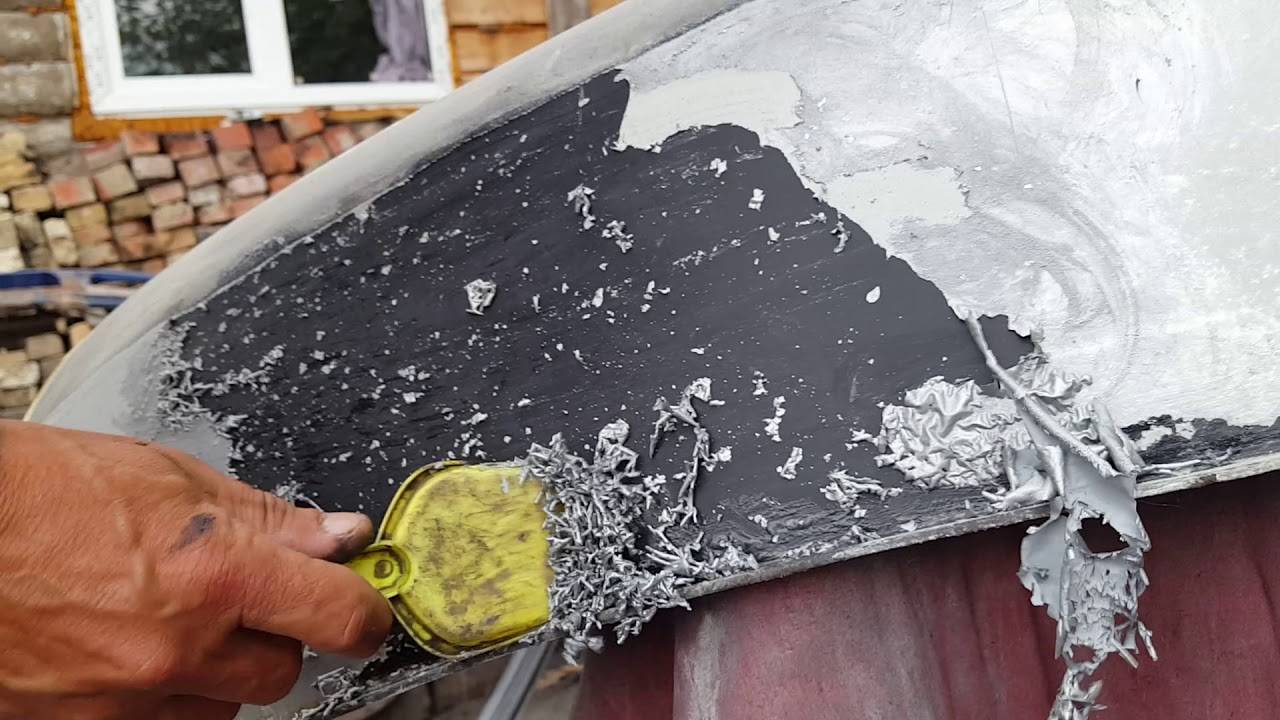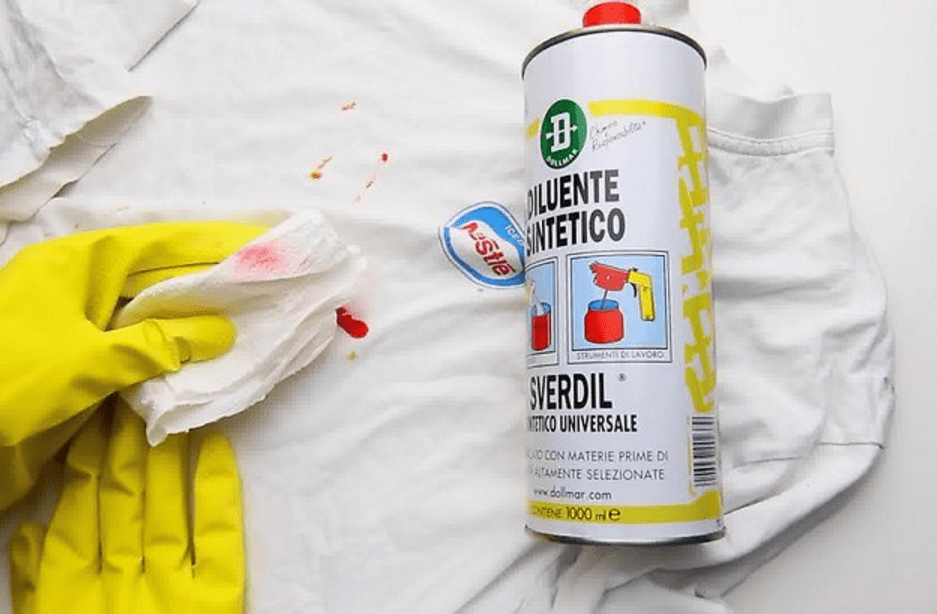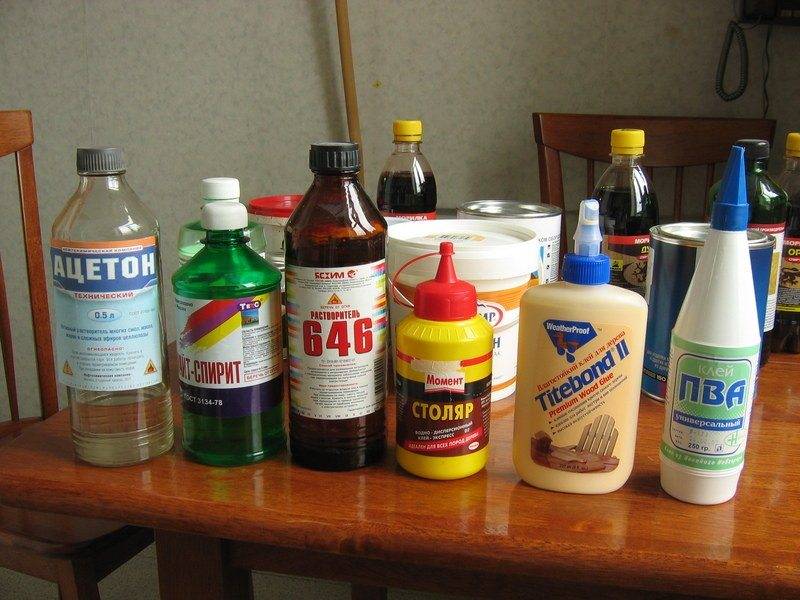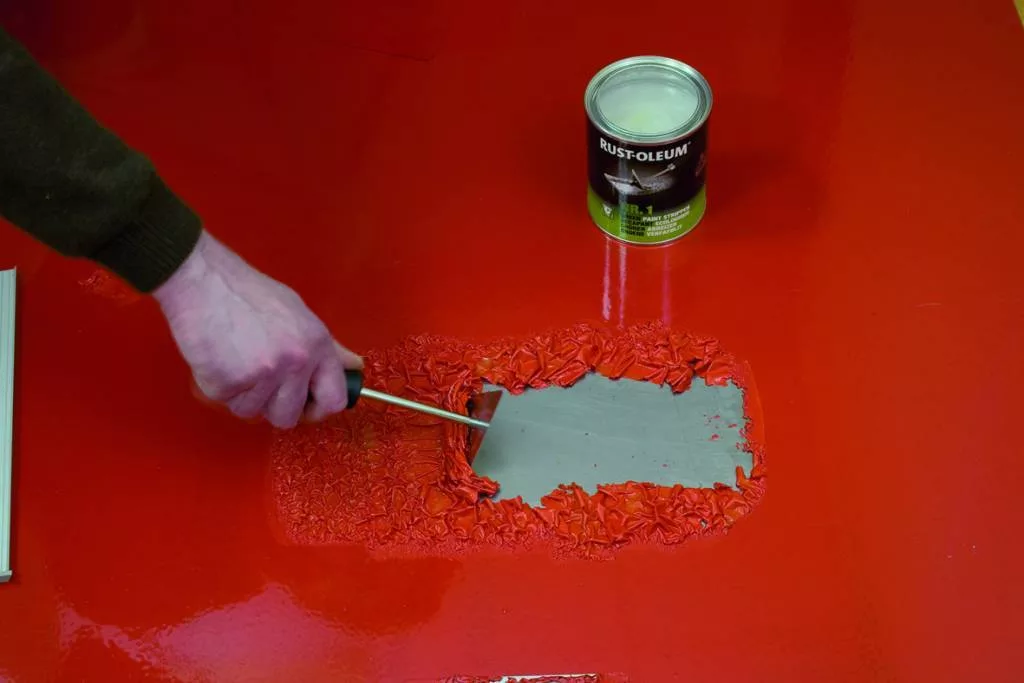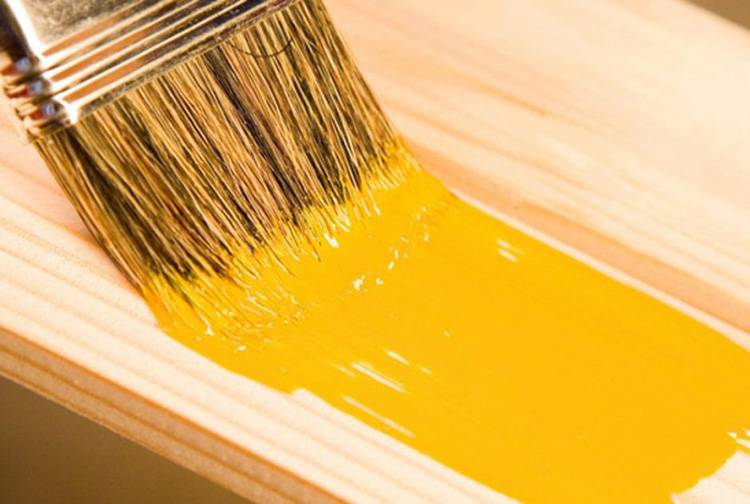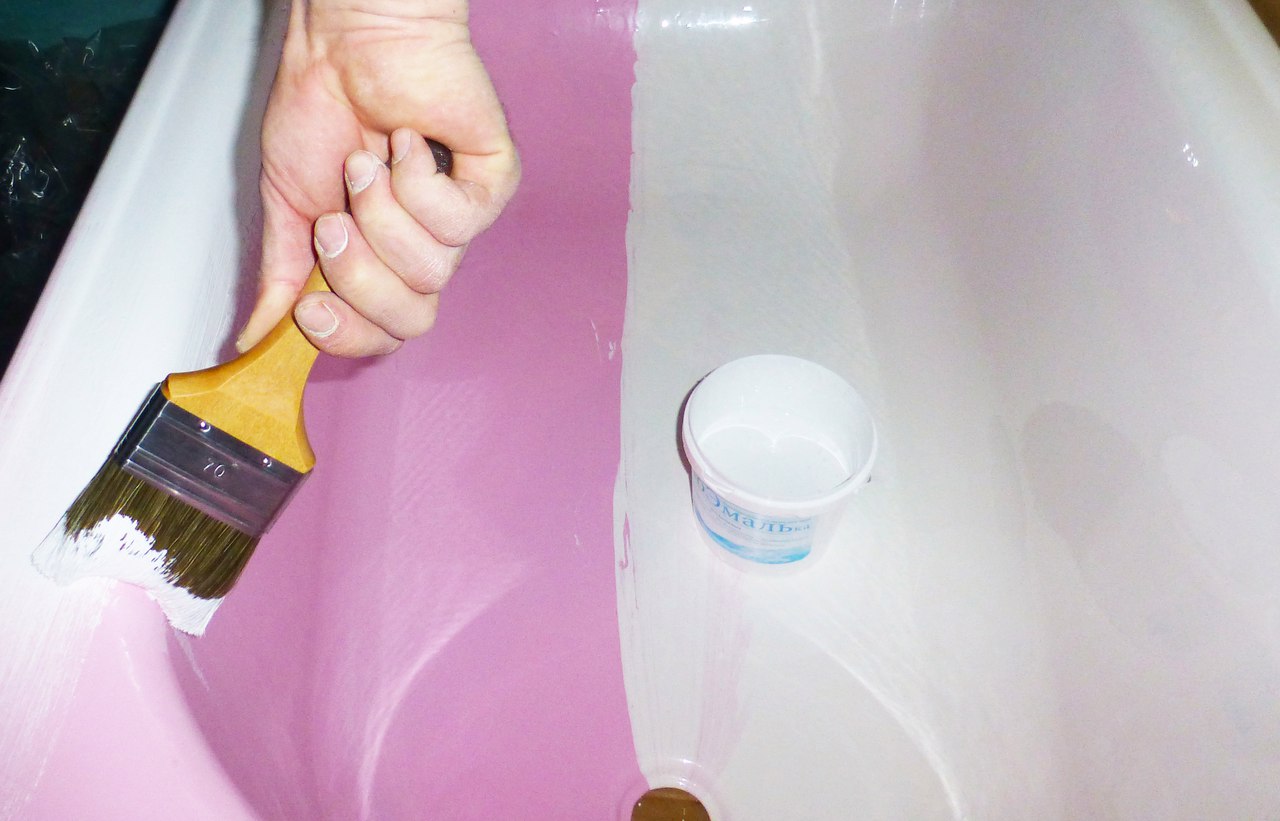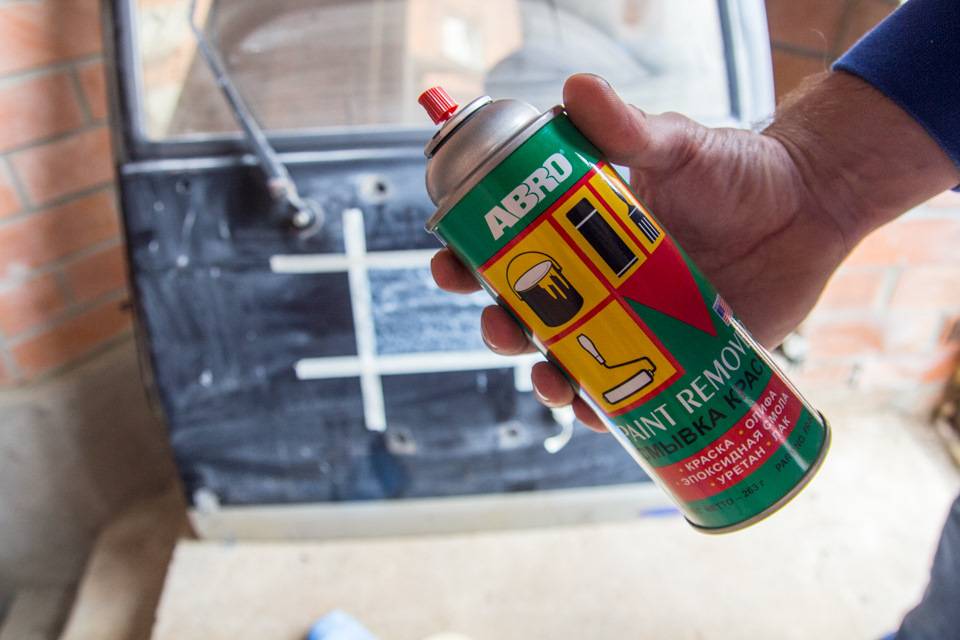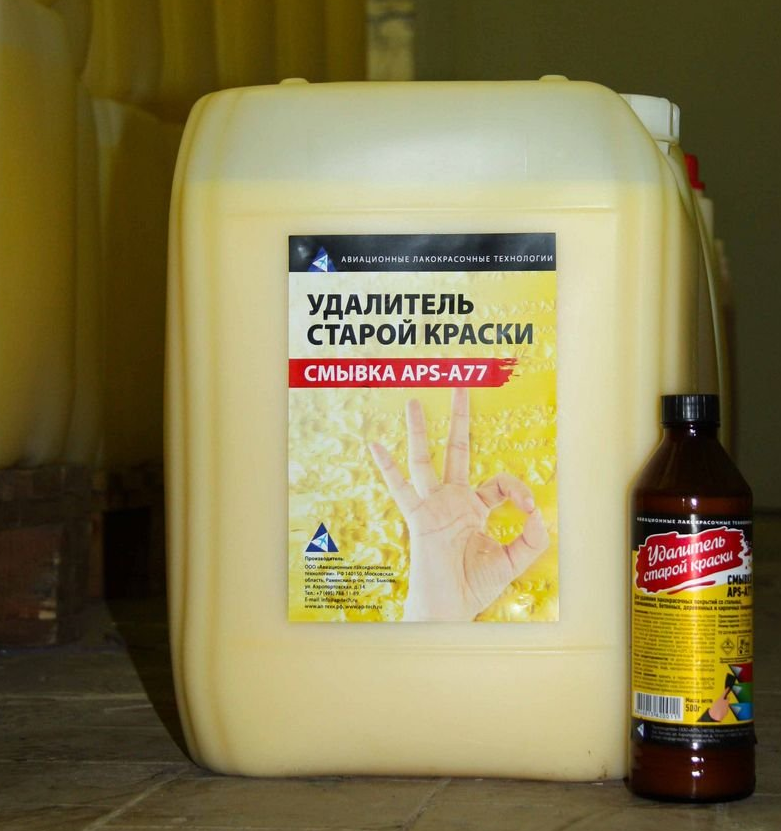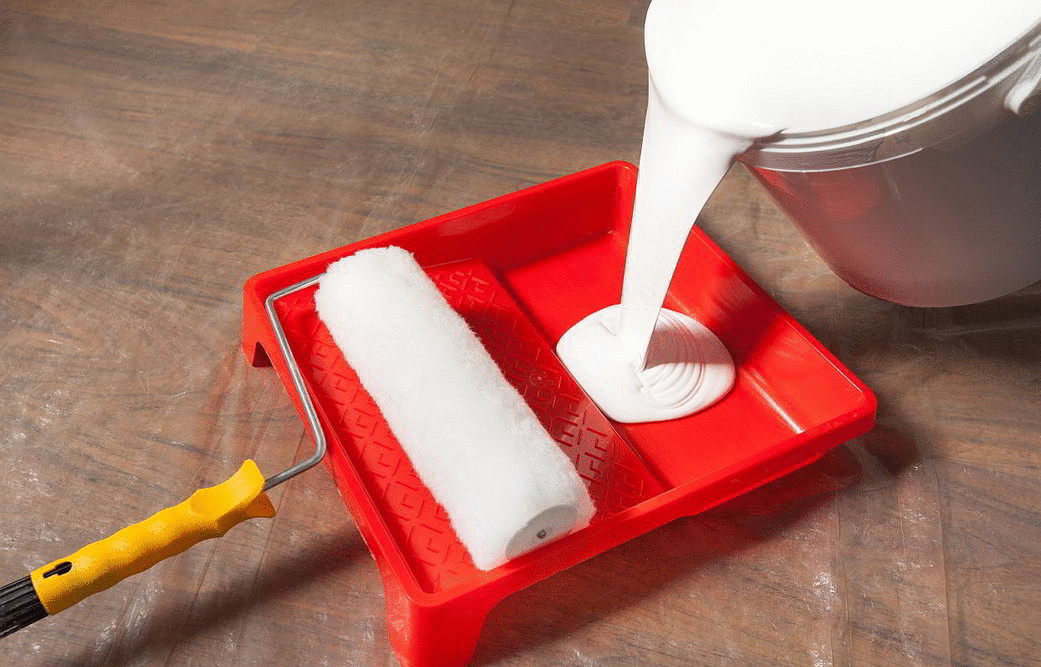How to clean fresh stains?
The drying speed of acrylic paint is its strength. If paint spills onto the floor while painting the walls, quick drying will be a real problem.
So:
- The quick-setting agent is difficult to wash off the hands and is especially difficult to remove from the fabric. Therefore, you must be careful when working. And if you accidentally apply acrylic on surfaces that cannot be painted, quickly remove any traces of it.
- A fresh stain without a trace is erased with a damp cloth or foam sponge. The main thing is to have them always at hand and put them into action in a timely manner. Removing stains should be done without haste, with great care.
- If the painting process does not allow for distraction to remove splashes, you should start cleaning accidentally contaminated surfaces or objects immediately after the next operation.
- Weakly adherent paint will succumb if washed with warm water and regular soap or a mild detergent. The means always available in the house will help to eliminate the problem: vinegar and soda. Apply warm water with the addition of baking soda or vinegar to a not yet old stain. After a few minutes, the paint will soften, it will become easier to wipe it off.
- Recently stained surfaces can be cleaned by heating the stains. The paint begins to swell, then it is removed with a scraper. The method is applicable only when the base under the coloring matter is not damaged by strong heat.
- Within half an hour, the spots can still be overcome. After the formation of a film, this will no longer be possible, and the removal of contaminants will turn into a long painstaking process.
Mechanical method
It is possible to get rid of the boring shade if the coating is unstable and the staining is done in one layer by soaking it with warm water, soap or alcohol solution. Algorithm for performing actions:
- Cover objects and surfaces that are not to be processed, the floor surface from unwanted contamination with polyethylene foil.
- Prepare a container, the selected liquid (warm water, soapy water, a weak water-alcohol solution).
- Moisten a roller, brush, sponge in the prepared solution, apply the solution to the selected part of the wall. It will speed up the procedure for using a sprayer, spray bottle.
- To accelerate the swelling of the top layer, the surface is scratched with a knife or a metal brush.
- The solutions are applied to small sections of the wall.
- After 15-20 minutes. old layers are soaked, they are scraped off with a spatula, knife.
- The not soaked paint is subjected to solution treatment again.
There is a way when using old newspapers, paper and wallpaper glue (paste). To do this, glue is evenly applied to the painted wall, paper or newspapers are glued. Over time, when the glue dries, scrape off the paper along with the acrylic paint with a spatula or knife.
On metal surfaces, a hair dryer, blowtorch or torch is used to quickly remove decorative coatings. Before starting work, remove flammable objects within the range of the device. Under the influence of high temperatures, the layers swell. After heat treatment, it is cleaned with a metal brush using a spatula. The method is suitable for use in non-residential premises, in open areas. It is forbidden to use this method on wooden walls, plastic sheeting to prevent fires. There are other options:
- Processing a painted wall with a grinder with abrasive nozzles.
- Removing old paint with a drill with special attachments;
- Manual processing of walls with sandpaper after preliminary wetting of the treated surface.
The final stage remains with a hard spatula. This tool passes the places where the old paint remained after the procedures described above. When carrying out work, it is recommended to protect the organs of vision and respiration. Mechanical methods of removing acrylic staining from walls are a lengthy process. Material costs with this method are minimal. Often, with mechanical methods of removal from concrete, porous surfaces, particles of the acrylic coating remain in the depressions. A combined method using chemicals to completely remove it is suitable.
Removing fresh dirt from clothing
Due to the special composition of this raw material, which includes resins and coloring pigments, it is capable of deeply eating into the pores of different planes.
Clothes are no exception: if the stain has been placed on the fabric, proceed to remove it as soon as possible. Answering the question of how to wash off acrylic paint, we highlight the main cleaning methods:
- Applying vinegar. Inexpensive but effective table vinegar can help remove fresh stains from fabrics. For this, ammonia is additionally used. These ingredients are taken in the amount of 1 cup and poured into a previously prepared container. At the same time, clothes should be in warm water. Before washing off the acrylic paint, add a pinch of salt to the composition. After that, the clothes are squeezed out of the water, take a soft napkin, wetting it in the composition, treat the stain. At the end of the process - clothes are washed in a machine.
- Isopropyl alcohol use. This composition is used to wipe fresh acrylic paint from fabric. Alcohol is applied to the stain, take a toothpick and gently scrape off the dirt. This must be done first in one direction, then in the opposite direction. After the manipulations done, the thing is washed using powder.
- Detergent for windows. The contaminated area is moistened with water before removing fresh acrylic paint from clothing. After that, the specified agent is sprayed onto the stain and try to wipe off the trace with a sponge.
- Hair fixation spray. The varnish is used in the same way as the glass cleaner. The stain needs to be rubbed in different directions to be effective.
Advice!
These products contain chemicals in their composition. To prevent damage to your favorite clothes, test them on an inconspicuous piece of fabric.
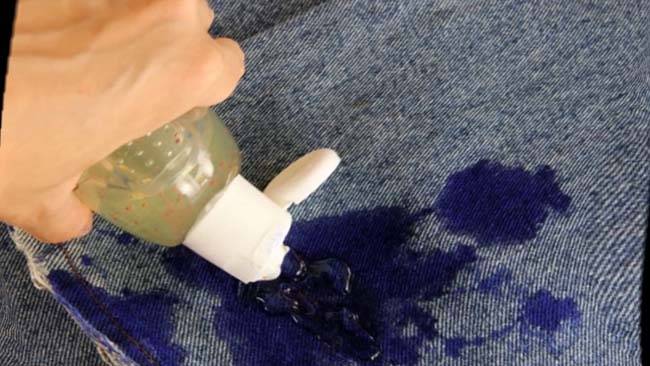
If the product is relevant for removing colored marks, do not forget to wash the item with powder after removing the stain.
Removing acrylic paints from floors, walls
When painting, acrylic can get on the table, chair, floor, wall, wallpaper, any surface that has not been covered with a protective film. If a stain of acrylic paint is on the linoleum, you can remove it with a knife. But this type of coating is afraid of mechanical damage, so you need to act carefully.
If acrylic accidentally comes into contact with materials such as metal, plastic, it is not necessary to use the solvents and chemicals described above. You can use any sharp object, scrape off the paint. You can clean acrylic from a hard surface with a blade, knife.
Easily remove acrylic paint from linoleum with a spatula
To remove acrylic from a wooden surface, use a gel wash. After putting on personal protective equipment, prepare the premises for working with the chemical, pour a wash on the floor, distribute it evenly over the surface with a spatula. If some stains still remain, remove them with a spatula. Then the floors are washed with water.
To clean windows, ceramics, tiles, use a razor blade, spatula or special cleaner. You can buy such a tool in specialized stores. A specialist will help you find the right solvent.
When choosing the right tool, the consultant will take into account the following nuances:
- the material from which the stain is removed;
- the number of layers applied;
- the strength of the adhesion of the paint to the surface;
- type of paint applied.
Heating is also a very popular proven way to remove acrylic. This popular method is used for cleaning hard and fabric surfaces. The essence of the method lies in the possibility of high temperatures to soften polymers.
If you need to clean clothes of acrylic paint, you will not be able to wash off the paint completely as described above. In this case, you need to use a more powerful tool. It could be a windshield wiper. You can use an iron instead of a hairdryer to heat the stain on the fabric. The fabric surface is ironed through foil.
There are many ways to clean clothes and other surfaces from acrylic paint at home. But still it is better to prevent damage to your favorite things, furniture, floors with paint
To do this, work is carried out in special clothing and is shown attention during painting with acrylic.
Share this
Class
Share this
Tweet
Zapin
Peculiarities
To be able to wash drops of paint from clothes or from the surfaces of the house, you need to know its composition. The components of the water emulsion are:
- water with polymer particles;
- acrylates and similar elements to create a strong film after painting;
- whitewash in the form of titanium dioxide or zinc oxide;
- minerals such as chalk, cement, lime;
- thickener in the form of CMC glue.
A feature of the paint is that it allows air to pass through well, retains its original appearance for a long time. Although it dries within 2 hours, but then it will stick firmly on the walls, ceiling. Finishing material is afraid only of low temperatures. It is easily washed off from surfaces that are exposed to rain or snow.
How acrylic is washed off the surface
clothing
It is very difficult to wash fabric things from any paint, including acrylic. Dyes penetrate deeply between the fibers and are difficult to remove from there. Remove excess paint from fresh dirt with a spatula or spoon. After that, the stained place is kept from the inside out under running cold water. Then the thing is washed.
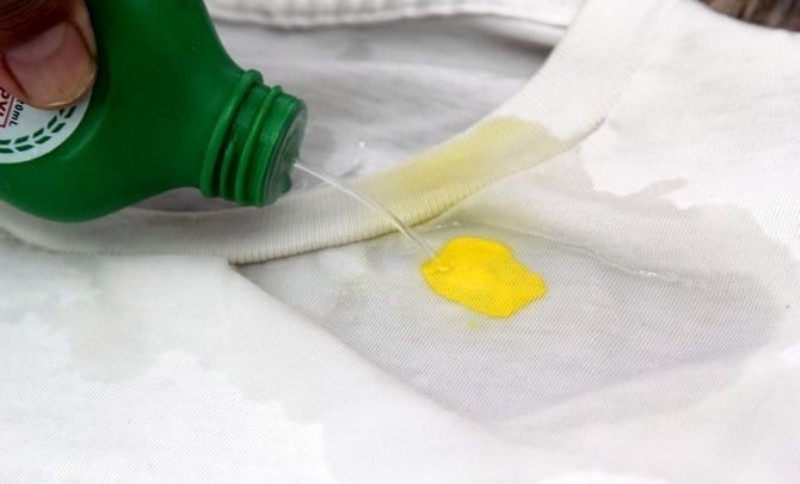
If the contamination is significant and not very fresh, then in order to remove the acrylic paint, you can add a professional remover to the powder during machine wash. The mode is set to be gentle - "delicate wash at 30 degrees". From folk recipes, a mixture of "vinegar + ammonia + salt" is suitable. All ingredients are mixed in equal proportions. This stain remover is applied to the stain and gently wiped off with a brush or sponge. Then the mixture is diluted with water and the item is soaked overnight. This is followed by a regular wash.
Tile
Due to the fact that the tile is an inert material, paint can be removed using different techniques. The simplest and cheapest is scraping with a ceramic scraper. If mechanical cleaning is not suitable for some reason, you can use any degreaser (white spirit, acetone, gasoline). Sometimes it is necessary to combine mechanical and chemical methods at the same time, especially when it comes to removing old paint.

Linoleum
Since the coating is hard, it is permissible to remove the paint with a sharp tool. A blade, knife or spatula is suitable for this. To soften the dye residues, the place is heated with a hairdryer. The cleaning process is then accelerated.
Removing acrylic marks on linoleum is possible with soap and water. It is also recommended to slightly heat the dirt as a preparatory moment. The lathery sponge is left on the stain for a short time and then rubbed until it disappears completely.
Plastic
Plastic items are cleaned in a similar way - by gentle scraping. But to make the task easier, it is recommended to warm up the plastic part if possible. Another preparation option is to put a soapy cotton pad on the stain. After that, it will be more convenient to remove the paint.
Some plastics are susceptible to aggressive solvents and the surface may become cloudy or discolored.Therefore, you should not use strong chemical reagents to remove acrylic stains. When buying a store wash, you should carefully read the instructions - does it allow for use on plastic.
Laminate
Unlike tiles, it is not recommended to use sharp objects, products with abrasive inclusions, corrosive liquids and large amounts of water on laminate flooring. Removing a fresh speck is carried out with a soapy sponge.
It is only important to ensure that there is not too much liquid and that it does not penetrate into the gaps between the panels. A faster and easier way is to use ready-made cleaners.

Mechanical removal with a knife or spatula is suitable for untreated wood surfaces.
Polished items require special care. For them, it is better to use gel washes.
If the drop is still quite fresh, then the same soap solution will help wash it off. For older problems, alcohol-based fluids may work. They rub the pollution until it is completely eliminated. The process is laborious, but it allows you to preserve the appearance of the furniture.
Glass
Glass and especially mirror surfaces are best treated with special agents. They do not cause clouding of the material and do not leave scratches, since they do not contain abrasive particles in the composition. Of the available glass stain removers, acetone, glass cleaner, nail polish remover, and refined gasoline are suitable. Sometimes the removal of stubborn stains from glass has to be repeated. Finish the procedure by washing the glass.
Wallpaper and furniture
How acrylic is washed off the wallpaper depends not only on the freshness of the paint, but also on the type of wall covering. If the wallpaper on the wall is vinyl, silk, laminated paper, then the paint can be removed with a cloth soaked in water. The dried drop is carefully scraped off with a knife and the surface is cleaned with a toothbrush. It is advisable to wipe off small residues with acrylic nail polish remover.


If you need to clean the plastered walls, then you should use the easiest way - heating with a hair dryer. How to do this in practice is shown in the following video:
Cleansing objects and things from acrylic paint is a "delicate" matter
It is very important to choose the correct solvent and follow the instructions for its use exactly. Not the least important is the timeliness of the stripping.
If all the conditions are met, the likelihood of the product returning to its previous ideal state is quite high.
Methods for removing old acrylic stain
1. Thermal. A gentle way. Correct heating softens the film former and can cause the paint to soak.
To remove acrylic stains from a hard surface, treat the problem area with soapy water, then direct a stream of air from a working hair dryer (can be replaced with an iron with a steam function or a steam generator) and hold for 3-5 minutes. Remove softened paint with a cloth or sponge soaked in soapy water.
In the case of clothes or carpet, after heating, remove the acrylic stain with a glass cleaner or sanitary ware cleaner, ordinary soap will not help, since the dye is deeply absorbed into the fabric.
2. Mechanical. Suitable for furniture and hard surfaces: wood, plastic, metal, linoleum and laminate. Before applying chemicals (especially to varnished items), try removing acrylic with a sharp tool - a well-sharpened knife or blade. To avoid scratching, keep the tool level without tilting it.
3. Chemical. An effective but dangerous method that leaves marks on the fabric, therefore suitable for brushes, surfaces and old work clothes such as overalls.
To remove acrylic paint that is firmly embedded in the structure, you will need a potent solvent: acetone, white spirit, gasoline, kerosene, brake fluid or nail polish remover.To protect your hands, work with these aggressive substances only with gloves.
Sponge the solvent onto the surface. Leave it on for half an hour, dampening the stain with the chosen substance every 10 minutes. It takes a minimum of 30-35 minutes for the acrylic paint film former to soften. Then remove the paint with a piece of porous cloth or a sponge soaked in solvent.
To clean dry brushes, it is enough to hold the tool in solvent for 40 minutes, then rinse with water.
4. Store products. They cope with any stains, drips and drops, but due to extreme aggressiveness and even health hazards, they are used in extreme cases when other methods have not helped.
In hardware stores, paint removers are sold, which are universal and special for removing acrylic. Ask a sales assistant to find the option that best suits your problem.
In most cases, the procedure is as follows:
- Soak the unwanted cloth in the preparation.
- Wipe the stain (treat the surface).
- Wait 10 minutes, then use a clean cloth to remove drips and drops.
- Wash the surface with warm water and soap.
How to remove paint stains? How to remove paint stains from clothes?
Article author: Elena Vesnovskaya
founder and head of the site. Over 25 years of experience in home economics
Your mark:
How is it erased?
To remove dried paint will help: gasoline, acetone, kerosene, white spirit, nail polish remover. A rag, on which one of the products is applied, is rubbed over the contaminated area and waiting for a time - half an hour, after which the treated area is thoroughly wiped.
An effective method of removing dried acrylic stains will be the use of a remover - a special substance suitable for all types of paints. You can buy such a tool at a building materials store. If you have any doubts about the choice of a wash, you can always contact the seller for help.
When using a solution that has a pungent odor and corrodes the skin, you must strictly follow the safety rules. A number of activities should be carried out, including: opening windows and doors, using special gloves, a respirator and goggles. The wash should be applied to a rag, treated with it and wait 10 minutes. To complete the cleaning procedure, wipe the affected area with a clean cloth.
From furniture
Stains from metal or plastic are removed with a knife, blade or other similar tool
Using light pressure on the tool, you should very carefully and carefully remove the dried paint
Stains on wood, concrete, metal or plaster can be wiped off with a gel remover. It is necessary to work with such a composition in a respirator, glasses and gloves, and in the room it is necessary to open the window. The wash is applied in an even layer to the surface with a brush. The paint comes off in layers. Its remains are removed with a spatula, and the surface is rinsed with water.
To wash off acrylic from glass, one of the cleaning options is used: surface treatment with one of the considered means or cleaning the stain with the safest cleaner for this type of surface - a special wash.
From the floor and walls
Linoleum is a surface that is not afraid of mechanical damage, so it can be cleaned of acrylic paint with a knife.
It is possible to erase the acrylic stain from the wooden surface with a gel remover. After putting on personal protective equipment and preparing the room for working with the chemical, the remover should be applied to the floors by pouring and then evenly spread over the surface with a spatula. The peeling paint must be removed with the same spatula, and the surface must be rinsed with water.
It is possible to remove paint from windows, ceramics or tiles with a special cleaner sold in a specialized store. A specialist will help you choose the right product based on the material from which the stain is supposed to be removed and the type of paint applied.
From clothes
It is very difficult and difficult to quickly clean acrylic stains from the surface of clothes, and in most cases it is almost impossible.
But there are some powerful cleansers and ways to use them:
Sunflower oil, hot water, laundry soap. First, wipe the fresh stain with oil, then soak the garment in soapy water for 15 minutes.
"Vanish" or White Spirit. Rub the stain thoroughly with the product of your choice, and then machine wash the product.
- Window cleaner, brush. Apply the liquid to the stain and wait for the paint to dissolve. Then wipe the area to be cleaned with a brush. At the end of the procedure, the product should be wiped off.
- Nail polish remover (no acetone), cotton pad. Place a piece of paper under the soiled surface and wipe the stain with a liquid-treated disc.
- Wash (solvent), sponge, gloves, respirator, goggles. Wear personal protective equipment. Apply a small amount of the product to the area to be treated and leave it on for 5-10 minutes. After that, gently wipe the stain with a sponge soaked in the same solution. After completing the cleaning procedure, the item should be washed in the washing machine.
You will learn more about how to remove an acrylic stain by watching the following video.
Features of paint based on polyacrylates
With the help of acrylic paint, the required color is given to various materials:
- plastic;
- tree;
- concrete;
- fabrics;
- brick;
- glass.
This multifunctional coating is used for outdoor, indoor finishing work. With their use, original stretch ceilings are obtained, acrylic is used for painting nails, covering small models, figures.
There are no restrictions on the choice of paint color. The variety of the palette will captivate every customer. Its advantage over other types of paint can be considered the fact that acrylic does not flow off after being applied to vertical surfaces. It fits perfectly, does not form irregularities, stripes.
A juicy palette of acrylic paints is perfect for children's creativity
The difference from oil paint is the following:
- fast drying;
- lack of smell;
- no cracking.
Due to the above advantages, most users prefer acrylic paint for renovation in a residential, office or industrial space.
Acrylic has an essential feature that is represented by its unique composition. The following components are included in acrylic paint:
- acrylic acid;
- water;
- dye;
- film former.
Difficulties in cleaning the stain are due to the presence of a film that accelerates the curing of this type of paint.
Folk remedies for fresh traces
Cold water inhibits solidification. After the blot appears, immediately soak the product in it. The cold liquid will not allow the dye to be absorbed into the fabric fibers and the clothes are washed better after soaking in low temperature water.
Then use folk remedies to remove fresh paint marks.
How to remove acrylic paints from clothes if the trail appeared no later than 2 hours ago? For this purpose, hairspray, window cleaners, sunflower oil and laundry soap are used, there are other proven recipes.
Take a look at what is in the house and start removing acrylic from clothes immediately.
WD-40
An unusual method of application, but really effective. WD-40 is sold in hardware stores.
How to wash off acrylic paints - step by step guide:
- Remove some of the pigment. Use a knife, putty knife, or scraper.
- Spray the stain with WD-40. Wait 20 minutes.
- Rub the dirt with a sponge. Try to remove more of the paint.
- Take the knife, scrape off the remains.
- Fill a basin with warm water, add dishwashing gel. Wash your clothes.
WD-40 is an aerosol preparation. Miraculous lubricant works wonders.This versatile remedy is used for almost everything. With its help, it will turn out to wipe acrylic from plastic, rubber, wood and metal.
Sunflower oil, hot water and laundry soap
Acrylic pigment washes well sunflower oil and 72% soap. The method is also used for conventional oil paints.
How to remove acrylic paint from clothes:
- Sprinkle sunflower oil liberally on the dirty area. Wait a little, it will soften the pigment, prevent the paint from penetrating deeper into the fibers of the fabric.
- Wash the stained item in hot water and laundry soap. Rub well.
- Rinse with clean water. Repeat as necessary.
Use only soap, no sunflower oil. They poured hot water over the stain and rubbed it. Act quickly.
Isopropanol
Isopropyl alcohol will solve the problem with acrylic on clothes. After soaking in cold water, blot the stain off with paper towels.
Then do the following:
- Take a bottle of isopropyl alcohol (available from a pharmacy or online, cheap) and saturate the stain. Do not spare funds, moisten the cloth well.
- Scrape the paint off the product with your fingernail, coin, or other object. Try to get the most out of it.
- Send your clothes to the washing machine. Set the wash cycle according to the type of fabric.
Fresh traces can be easily removed by isopropanol and powder. If paint remains, repeat the process.
Hairspray or window cleaner
The method for removing acrylic paint from fabric is suitable for silk and natural materials.
After soaking, squeeze out the water. Spray the stain with varnish or window cleaner. Blot the stain with a sponge, do not rub. Wash the cleaned sweater with powder.
The paint can be washed well with varnish or window cleaner, because they contain a small amount of alcohol.
Contamination reasons
Many factors can cause contamination of the bathtub surface: poor water quality, soap deposits, corrosion of the metal layer, rust from old pipes, darkening of the enamel from old age, damage from aggressive care. Each type of surface requires an individual approach and the selection of suitable products.
Simple plaque
The most common type of contamination is organic plaque. It remains from the washed away dead cells of the human body, together with sebum. This biological mixture settles as a film on the walls and is washed off with a sponge and soap.
Limescale
Lime on the walls of the bath comes from water of increased hardness, which contains a large amount of minerals. Such water in Russia flows from taps in most regions. Calcium-magnesium mixture accumulates on the enamel and forms unpleasant smudges and stains.
Detergent deposits
Detergent foam mixes with organic dirt and deposits on the bathtub walls. Such plaque is predominantly gray in color and is capable of eating into deep layers of the material.
Rust
Rusty deposits are traces of iron oxidation as a result of pipe leaks due to old age or due to stagnant water. Such contamination is difficult to wash.
Yellowness on the enamel
Over time, any surface of the bathtub will turn yellow from exposure to water. Chlorine impurities and chemical residues form a dense film, eating into the enamel layers. To avoid this unpleasant effect, the bath must be thoroughly cleaned regularly.

Old enamel
Each type of bathroom coating fades, becomes covered with scratches and chips, into which dirt eats. In this case, it will be difficult to whiten and polish the surface.
Other
The bathroom is used not only for washing the body, but also for other procedures: washing shoes, animals, treating cuts, and so on. You can remove traces of colored shampoos, foam, brilliant green, potassium permanganate using folk and chemical agents
It is important to consider the type of material, since many cleaning agents are not suitable for acrylic bathtubs.

